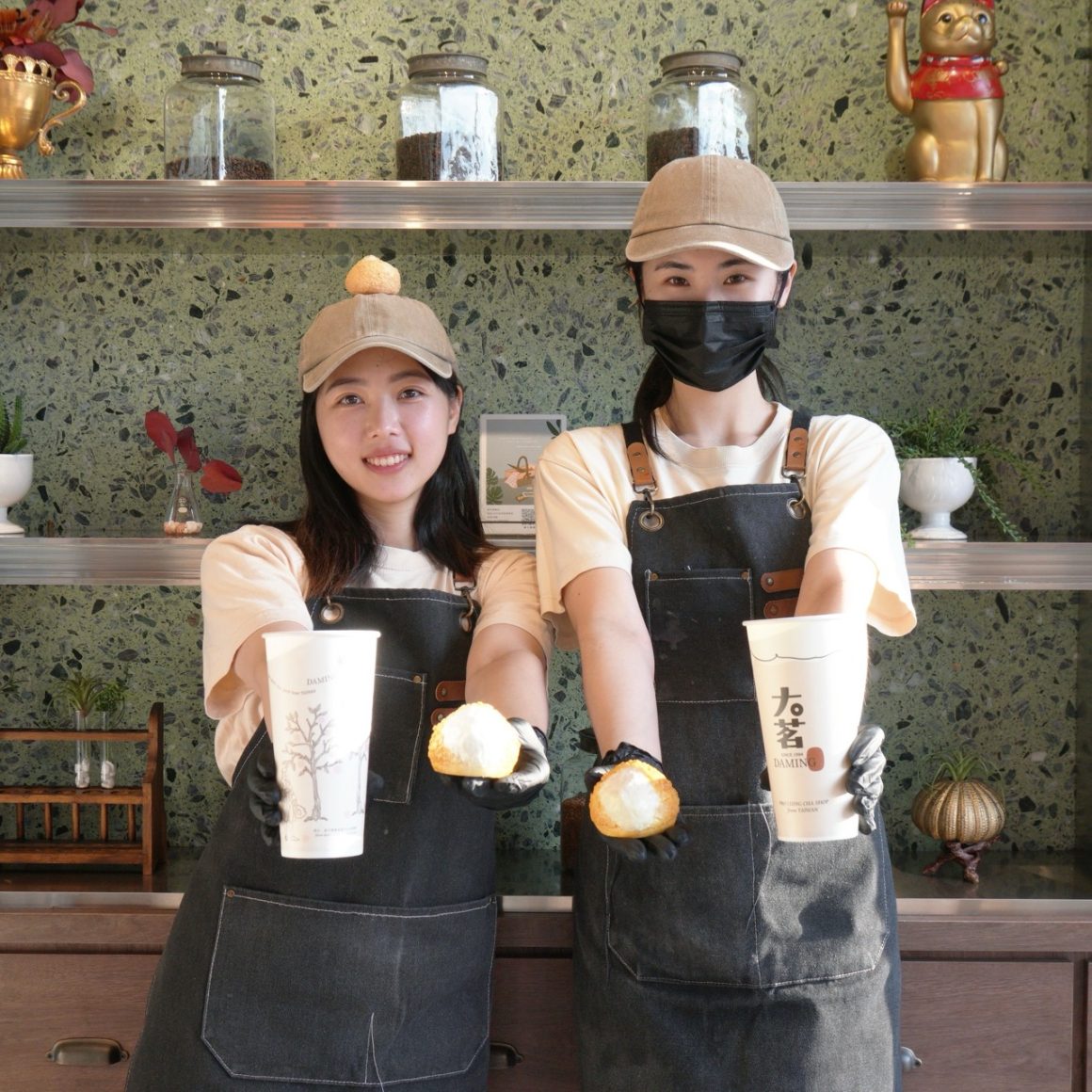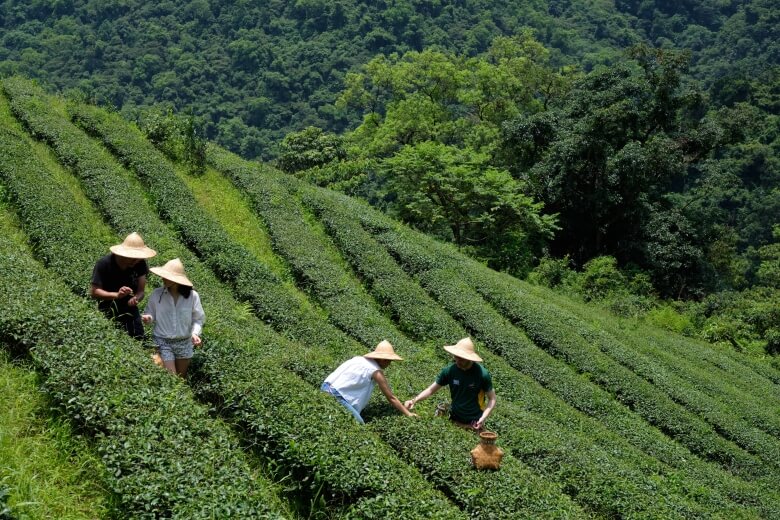Author Chih Yi Chen
Photographer Gage Skidmore, Annie Hatuanh, my Taiwan Tour, A Nice Holiday, Macu, Da Ming, Dixit Dhinakaran
Bubble tea, often referred to as “boba,” is a beverage that transcends cultural and geographic boundaries. Combining tea, milk, and chewy tapioca pearls, it offers a unique flavor and texture that has garnered millions of fans worldwide. Originally from Taiwan, bubble tea has evolved into one of the country’s most iconic cultural exports, celebrated not only for its taste but also for its creativity and versatility. Recent remarks by Canadian actor Simu Liu on the drink’s origins have reignited discussions about its history and significance. While its roots in Taiwan are undeniable, for Taiwanese people, bubble tea represents just one aspect of a broader and vibrant hand-shaken drink culture that deserves global recognition.
The Roots: A History of Hand-Shaken Tea
The concept of hand-shaken tea emerged in the 1980s in central and southern Taiwan, coinciding with the proliferation of bubble tea shops (泡沫紅茶店). These shops initially focused on frothy black tea, made by vigorously shaking tea, syrup, and ice in cocktail shakers. This technique was inspired by cocktail culture, which had been introduced to Taiwan during the U.S. aid period in the mid-20th century. Repurposing cocktail shakers for tea preparation was a simple yet ingenious twist that laid the foundation for Taiwan’s thriving hand-shaken drink culture.
Bubble tea shops became wildly popular for their affordability. Unlike the premium teas served in traditional tea houses—luxury items that could cost thousands of NTD per pound—bubble tea provided a refreshing and accessible alternative, perfectly suited to Taiwan’s subtropical climate. It became a drink for the masses, enjoyed by people from all walks of life.

One of the earliest pioneers of the movement was Quickly (快可立), a bubble tea shop founded by Huang Puguang (黃普光) and his wife in the early 1980s near Taichung Park. Their innovative approach to tea preparation and presentation catalyzed the first wave of hand-shaken beverages in Taiwan. Over time, the movement spurred the emergence of countless brands, each offering signature drinks ranging from classic pearl milk tea to fruity hand-shaken teas. Today, Taiwan is recognized as a global leader in beverage innovation, a reputation rooted in the creativity of these early entrepreneurs.
Klook.comTaiwan’s Unique Tea Culture
Thanks to its ideal climate for growing tea, Taiwan has become both a leading producer and a haven for tea enthusiasts. Its relationship with tea is profound and multifaceted, rivaling even the storied traditions of the United Kingdom. However, the way tea is consumed in Taiwan stands in stark contrast. While British tea culture evokes images of cozy home gatherings or refined tea rooms, Taiwan’s tea culture thrives in the vibrant and bustling beverage shops scattered across its urban landscapes.
Boasting over 16,000 beverage shops nationwide, Taiwan offers a kaleidoscope of options to satisfy diverse tastes. Traditional oolong and green teas coexist harmoniously with modern innovations like salted cream-topped teas, taro milk tea, and fruit-infused blends. This seamless blend of heritage and creativity highlights Taiwan’s unique ability to adapt its rich tea tradition to contemporary trends, crafting drinks that captivate both local and international audiences.

These shops are more than just places to grab a drink—they are integral to the social fabric of Taiwanese society. Beverage shops serve as casual meeting spots, popular hangouts for students, and even makeshift offices for entrepreneurs. Their ubiquity and variety symbolize the creativity, adaptability, and resilience of Taiwan’s food and beverage industry.
Exploring Taiwan’s beverage scene offers an unparalleled sensory adventure. Here are three standout drinks that exemplify the country’s innovative spirit:
Macu: Kings of Mango Smoothie /Yangzhi Ganlu (麻古 楊枝甘露2.0)
Macu’s Kings of Mango Smoothie is a tropical masterpiece that celebrates the island’s bountiful fruit harvests. Made with premium Taiwanese Aiwen mangoes (愛文芒果), the drink features a base of green tea jelly and blended mango ice, topped with chunks of fresh mango and pomelo pulp for a zesty burst of citrus. This creation is enhanced by a drizzle of specially formulated coconut milk, which ties the flavors together while adding a creamy richness. The interplay of fresh ingredients and refined techniques makes Kings of Mango Smoothie a must-try for any smoothie enthusiast.

(Photo・Macu site)
A Nice Holiday: Dai Wan Milk Tea
(一沐日 逮丸奶茶)

(Photo・A Nice Holiday site)
A Nice Holiday takes milk tea to the next level with its Dai Wan Milk Tea (逮丸, which phonetically resembles “Taiwan” in Taiwanese), a drink infused with the subtle fragrances of mugwort and bamboo. These ingredients lend the tea a distinct, earthy aroma that complements its creamy base. What sets this drink apart is its pairing with caozaiguo (草仔粿), a traditional Hakka snack made from glutinous rice dough filled with sweet or savory ingredients. Instead of traditional tapioca pearls, Dai Wan Milk Tea incorporates pieces of caozaiguo, creating a unique texture and a profound connection to Taiwanese culinary heritage.

Da Ming Tea Shop: Avocado Milk Foam Tea (大茗本位製茶堂 酪梨奶蓋)
Da Ming Tea Shop reimagines tea with its Avocado Milk Foam Tea. This luxurious drink combines the natural creaminess of avocado with a smooth milk foam topping, layered over freshly brewed Red Jade tea. The avocado adds a velvety texture and a hint of grassy freshness, while the tea provides a honeyed fragrance and delicate sweetness. This innovative combination underscores Da Ming’s dedication to balancing tradition with creativity, resulting in a drink that is both indulgent and refreshing.


Bubble Tea’s Journey to Global Fame
What started as a local Taiwanese innovation has grown into a global phenomenon. Bubble tea is now available in nearly every major city worldwide, from street stalls in Vietnam to chic cafes in Paris. This meteoric rise is a testament to its universal appeal—an affordable luxury that offers endless customization. The drink’s adaptability has allowed it to thrive in diverse cultural contexts, with local variations incorporating unique ingredients, from matcha in Japan to brown sugar syrup in the United States.
However, the globalization of bubble tea is not without its challenges. In some regions, tapioca pearls—the defining feature of bubble tea—are replaced with alternative ingredients due to cost or availability. While these variations highlight the drink’s versatility, they also underscore the importance of preserving its authenticity as a Taiwanese cultural export.

More Than a Beverage: A Symbol of Taiwan’s Innovation
The evolution of Taiwan’s hand-shaken drinks, from humble beginnings to an internationally celebrated industry, reflects the island’s unique blend of tradition and innovation. These beverages are more than just refreshments—they are cultural artifacts that embody the creativity and resourcefulness of the Taiwanese people.
For visitors to Taiwan, exploring its hand-shaken drink culture is a gateway to understanding the country’s culinary ingenuity and vibrant lifestyle. From the frothy black teas of the 1980s to today’s diverse offerings, Taiwan’s beverage scene continues to evolve, delighting palates and inspiring new trends around the globe.
As bubble tea’s popularity grows, it serves as a reminder of Taiwan’s rich cultural heritage and its ability to connect with the world through simple yet extraordinary creations. Whether you’re savoring a classic pearl milk tea or trying a modern innovation like avocado milk foam tea, each sip tells a story of craftsmanship, tradition, and global influence. Taiwan’s hand-shaken drink culture is not just a taste of the island—it’s a taste of its heart and soul.
Klook.com











